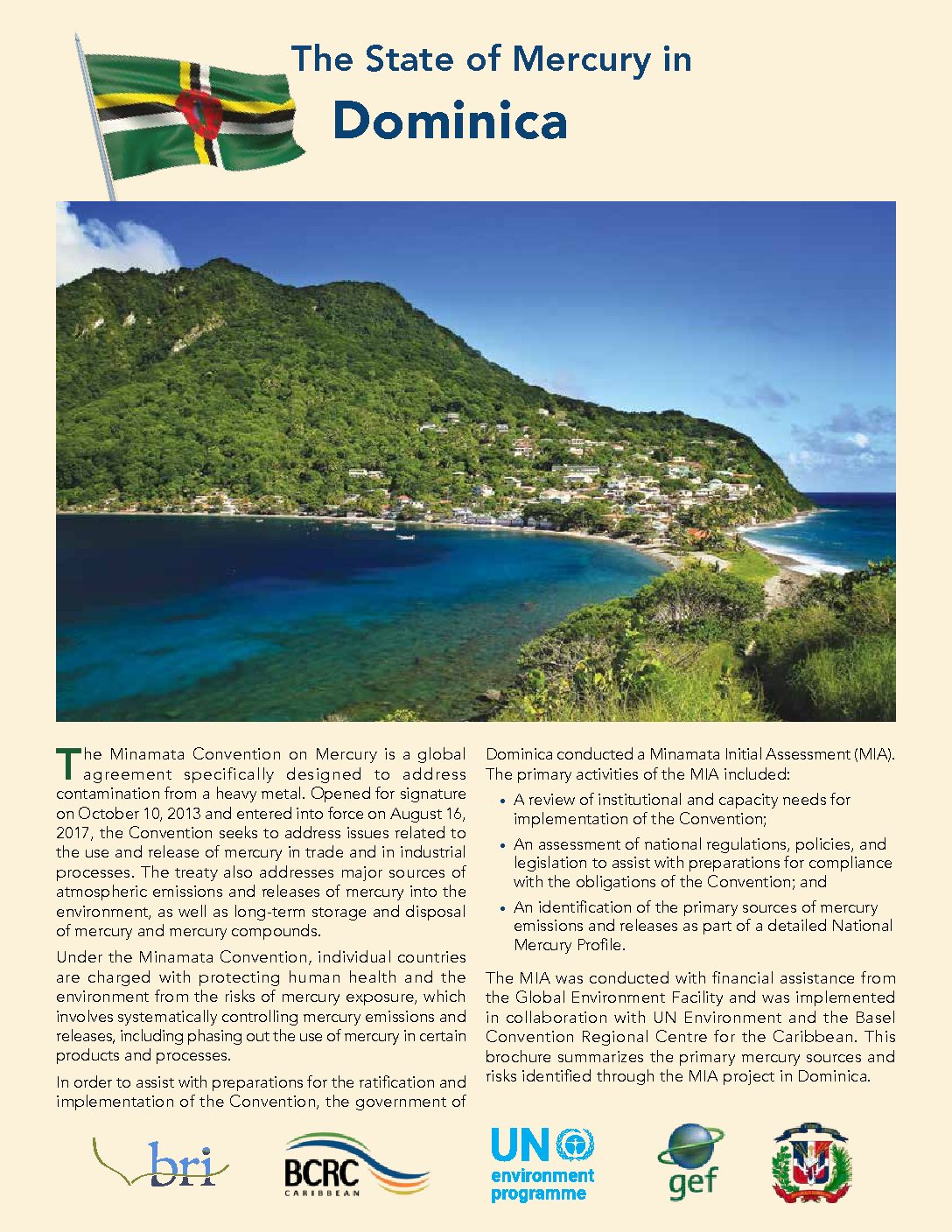Building a Mercury Monitoring Networking

Laboratory networks for mercury and other contaminant analyses in regional hubs throughout the world, especially in mercury hotspots, will provide important information for the assessment of risk, both to humans and wildlife, in these environments.
BRI’s extensive mercury work in the Caribbean Region has led the way for the first network of integrated laboratories to be established. The primary toxicology laboratory will be located in Antigua and Barbuda, with secondary laboratories in other Caribbean countries. These labs will serve as the regional hubs for mercury analyses of abiotic and biotic samples that are used for assessing human and environmental health.
Download the Caribbean Region Mercury Monitoring Network report here.
As International Technical Experts, BRI is assisted several small island developing states of the Caribbean, including Dominica, as part of a regional Minamata Initial Assessment. The Basel Convention Regional Center for the Caribbean implemented the regional MIA project and BRI provided expertise to assist with the development of national mercury inventories for each participating country using UN Environment’s Toolkit for Identification and Quantification of Mercury Releases. The results of this regional MIA will assist Dominica with meeting requirements outlined by the Minamata Convention to reduce mercury in the environment and exposure of mercury to humans.
Formal Capacity: International Technical Expert
Project Lead: David Evers
Funding/Implementing Agency: GEF/UN Environment
Executing Agency: Basel Convention Regional Center for the Caribbean
The State of Mercury in Dominica

Under the Minamata Convention, individual countries are charged with protecting human health and the environment from the risks of mercury exposure by systematically controlling mercury emissions and releases, including phasing out the use of mercury in certain products and processes.
In order to assist with preparations for the ratification and implementation of the Convention, the Government of Dominica conducted a Minamata Initial Assessment (MIA).
Country Profile

- Population: 73,543 (World Bank 2016)
- Surface Area: 750 sq km (UN Data 2014)
- Capital City: Roseau
- Official Language: English
- Fish Production: 945 tonnes (FAO 2015)
- UN Membership Date: December 18, 1978
Inception Meeting and Mercury Inventory Training Workshop
Photo 1: Representatives from Dominica, Antigua and Barbuda, Grenada, and Saint Vincent and the Grenadines gathered in Jolly Harbour, Antigua, March 14-16, 2018, for the Minamata Initial Assessment Regional Inception Meeting and Inventory Workshop. At the workshop, BRI’s David Evers, Oksana Lane, and Molly Taylor presented on a variety of mercury-related topics such as the development of national mercury inventories, biomonitoring, cosmetic sampling, and air sampling.
Photo 2: Participants of the Dominica Mercury Inventory Training and Fish Biomonitoring Workshop, held May 18, 2018.
Photo 3: On March 13th, BRI and the BCRC-Caribbean visited Dominica to host the Results Validation Workshop for the Minamata Initial Assessment in the Caribbean. Click here for a full copy of the Dominica Results Validation Workshop Report.





